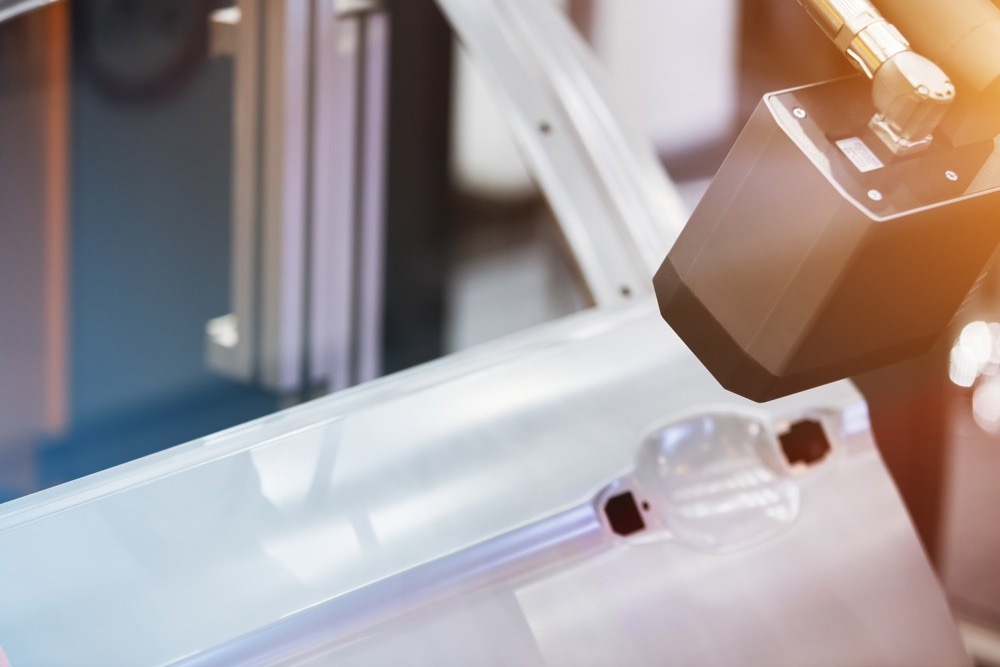Pioneering research and development in optical sensors is ongoing and multi-directional. Cutting-edge technological innovation brings new sensing devices and methodologies to the fore every year. While low-cost and readily deployable sensor products are entering the market at an ever-increasing rate, the roster of novel applications for optical sensing continues to grow. This article highlights some key recent developments in optical sensors.

Image Credit: MOLPIX/Shutterstock.com
Prototype Optical Sensor to Spot the Early Signs of Erosion
In 2022, a new prototype optical sensing device received its first tests in the field. The device, developed by a researcher from Queen’s University Belfast (QUB) in Northern Ireland, UK, could provide an early warning that a bridge may collapse and enable engineers to make preventative repairs.
The sensor is designed to detect signs of scouring, a specific kind of erosion caused by flowing water in rivers moving material away from the rivers’ beds and banks. Globally, scour causes more bridge collapses than any other factor, so preemptively treating it would have a significant impact.
The device will be subject to field testing on a real bridge in Northern Ireland. Its backers intend to roll out production as soon as possible after successful tests. Patent applications are currently underway, and the device’s exact design will not be revealed until the underlying intellectual property can be protected.
The testing site has had scour erosion identified in the past, but no works have yet been undertaken to remediate it. Researchers selected this bridge as it is more likely that detectable scour erosion will occur during testing.
The device was developed by Dr Myra Lydon, an engineering researcher at QUB. Lydon says that bridge scour has an estimated annual cost of £60 million in the UK due to the average 8.2 million passenger journeys lost due to bridge closures.
Sudden scour failure can have drastic consequences, even when bridges are regularly and properly inspected.
In Malahide, near Dublin, Ireland, a sudden scour event caused a railway bridge to collapse in 2009. The structure was inspected less than a month before it failed, but scour can begin to damage structures before showing any signs of strain visible to the naked eye.
The bridge collapsed after a passenger train had traveled over it, but fortunately, nobody was harmed.
The Irish Railway Accident Investigation Unit found that a minor breach had opened in one of the bridge’s supporting piers. The water pressure around it caused it to grow and eventually get swept into the river.
Fiber Bragg Grating Technology
Lydon’s new optical sensor uses fiber Bragg grating technology to provide an early warning system for potential structural failures caused by scour erosion.
A fiber Bragg grating is a short segment of optical fiber tuned to reflect light in certain wavelengths and transmit any other wavelengths. They work by periodically varying the fiber core’s refractive index to create dielectric mirrors tuned to specific wavelengths.
Fiber Bragg gratings can be applied in line in optical fiber to obstruct certain wavelengths, which has applications in sensing. Optical communications systems are the primary application area for the technology, where fiber Bragg gratings are employed in notch filters and optical multiplexers.
Because fiber Bragg gratings are highly sensitive to strain and temperature (their wavelength changes predictably with changing applications of force and heat), they also make good sensing components for detecting strain and temperature in optical fiber sensors.
There are sensing applications for fiber Bragg gratings in seismology instruments, ruggedized pressure sensors for extreme settings, and in oil and gas extraction. Electronic sensors traditionally employed in these areas are more delicate and subsequently not as reliable as fiber Bragg grating-based optical sensors.
Applications for Optical Sensors in Structural Health Monitoring
Structural health monitoring (SHM) systems capture and quantify structure deterioration events over time. The field is increasingly turning to computer vision technology and optical sensors to gather displacement data in a non-destructive, non-contact mode of operation.
Optical sensing also provides the advantage of working at long ranges, making installing and maintaining monitoring systems much simpler and more effective, especially in remote or hard-to-reach locations.
Computer-based optical sensing also presents a relatively inexpensive, quick-to-implement technological application for structural monitoring. It requires no interference with the regular operation of the structure that it monitors (as a bridge, retaining wall, and so on).
Most systems like this have deployed multiple cameras to work in an array, significantly increasing the installation cost. The new device is expected to use a roving camera methodology that captures an entire bridge’s response to live loading to detect signs of damage.
Continue Reading: The Future of Optical Sensors in Robotic Hands
References and Further Reading
Lydon, D., et al. (2021). Bridge Damage Detection Approach Using a Roving Camera Technique. Sensors. https://www.mdpi.com/1424-8220/21/4/1246
Ferraro, P., and G. De Natale (2002). On the possible use of optical fiber Bragg gratings as strain sensors for geodynamical monitoring. Optics and Lasers in Engineering.https://www.sciencedirect.com/science/article/pii/S0143816601001415
Optical sensor could provide early warning of bridge collapses. (2022). Optical sensor could provide early warning of bridge collapses. [Online] Optics. Available at: https://optics.org/news/13/6/36 (Accessed on 22 July 2022).
Disclaimer: The views expressed here are those of the author expressed in their private capacity and do not necessarily represent the views of AZoM.com Limited T/A AZoNetwork the owner and operator of this website. This disclaimer forms part of the Terms and conditions of use of this website.